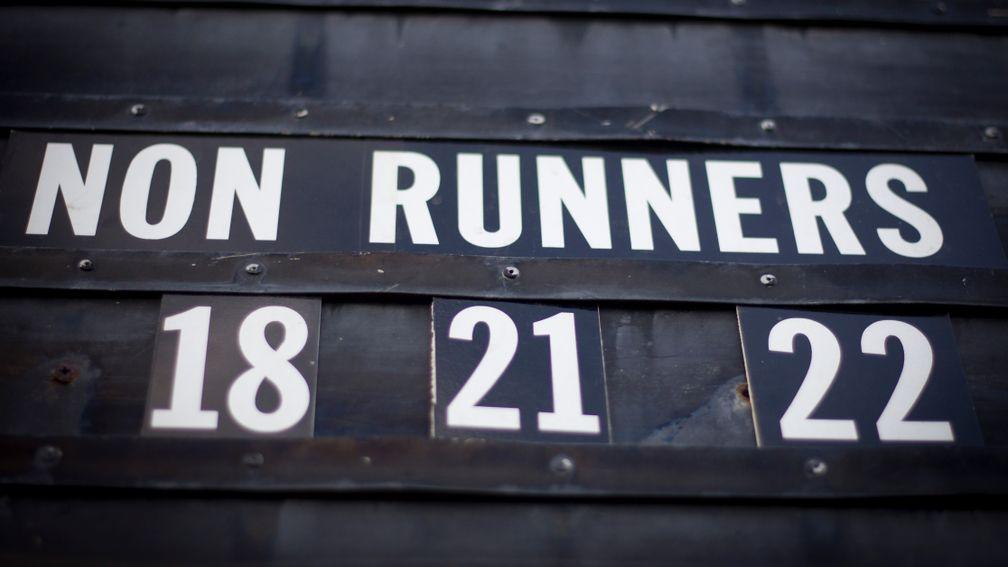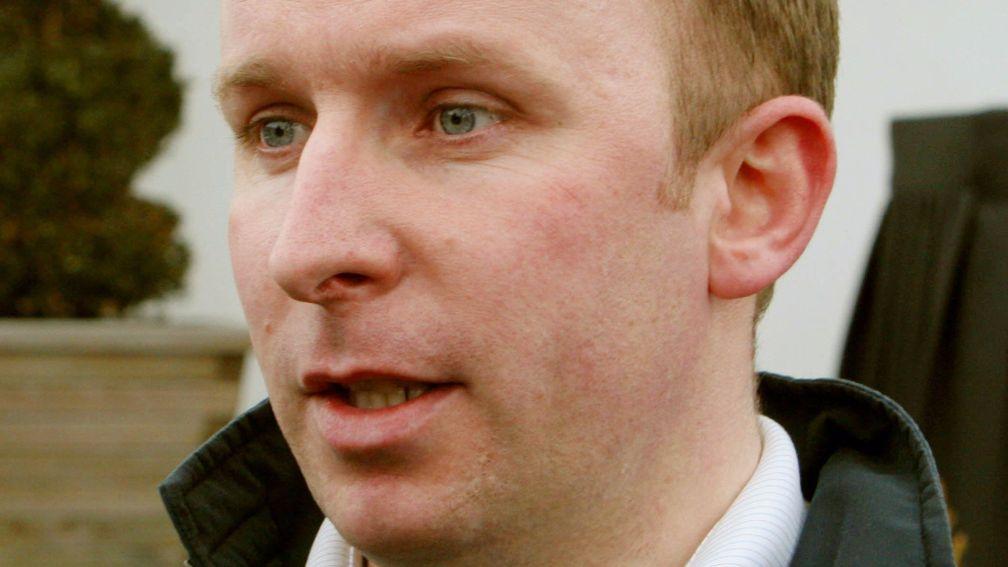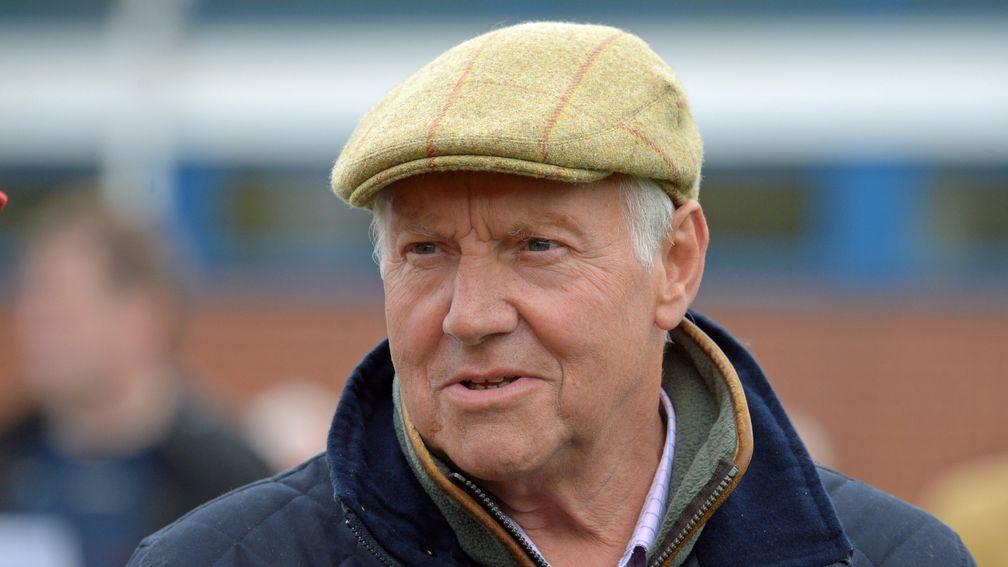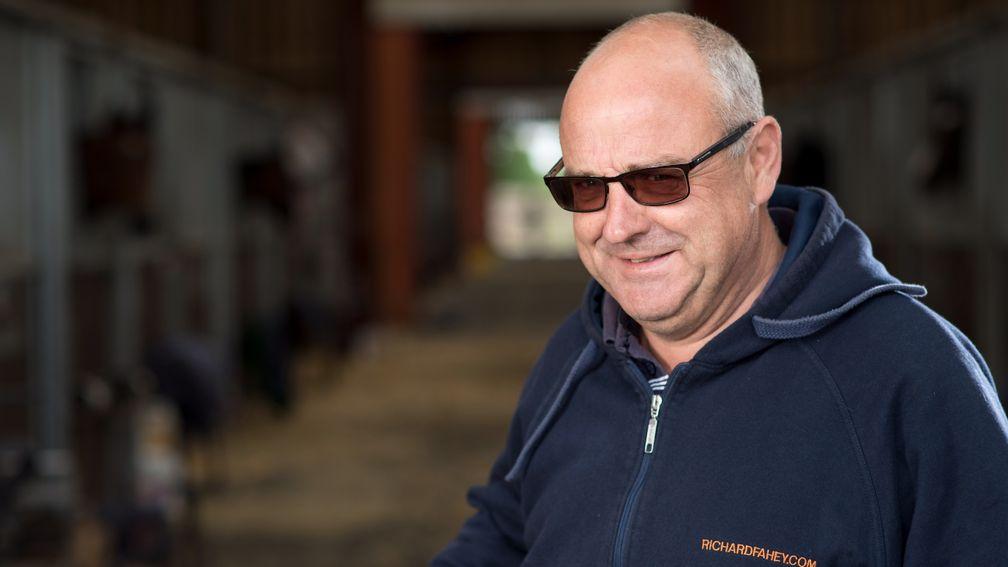Trainers hit out over prospect of losing right to declare non-runners

Two trainers falling foul of new non-runner thresholds highlighted in a league table of performance warned they would not compromise equine welfare to improve their numbers.
Eight Flat and one jumps trainer will lose the right to declare their horses as non-runners (self-certification) for a year if by March they are still having non-runners at the same rate, according to figures released by the BHA on Monday.
The rule, part of a series of measures designed to decrease non-runner rates in British racing, will take into account declared runners from the previous 12 months.
Rehabilitating horses
But Patrick Morris, the worst offender with 24 non-runners from 104 declarations between October 1, 2016 and September 30, 2017, said that while he is hopeful of reducing his 23 per cent non-runner rate he would accept any punishment in preference to compromising the health and fitness of the animals under his care.
A large part of Morris's business is rehabilitating horses for other trainers in order to send them back fit and strong, and he suggests it is this dedication to his horses' welfare that may have caused his inflated numbers.

"I can only speak from a personal point of view," he told the Racing Post. "My numbers look quite bad, but it's a small sample size and I think we have a good chance of improving it quite easily by having just a small number of runners.
"I train a bunch of cast-offs. I don't have two-, three- and four-year-olds, and they have all sorts of niggles and problems, so horse welfare is paramount to me. If I have a six-year-old who has a tweak I'll err on the side of caution and not run – even if it's fifty-fifty. I don't set out to have non-runners – it's the last thing you want – but 48 hours is a long time in an older horse's life.
"The only way I could have improved it is by cutting back on horse welfare, which I think is the wrong thing to do. I'll be doing everything in my power to get this number down but, no matter what the repercussions, I will not run a horse if I don't think it's right for the horse – regardless of the consequences. I'm not going to change that."
FLAT TRAINERS
(October 1, 2016-September 30, 2017)
Name Declarations Non-runners Percentage
Patrick Morris 104 24 23
Steph Hollinshead 129 26 20
Ben Haslam 160 31 19
Phil McEntee 260 46 18
David Brown 265 43 16
Richard Price 109 17 16
Noel Wilson 146 23 16
Neil Mulholland 136 21 15
Richard Guest 489 69 14
Robert Cowell 384 54 14
Rebecca Menzies 134 19 14
JUMPS TRAINERS
(October 1, 2016-September 30, 2017)
Name Declarations Non-runners Percentage
Mark Gillard 117 17 15
Kerry Lee 198 19 10
Tom Symonds 138 14 10
David Dennis 276 28 10
Jeremy Scott 208 18 9
Brian Barr 105 9 9
Neil King 181 16 9
Graeme McPherson 193 17 9
Bernard Llewellyn 116 10 9
Alexandra Dunn 266 25 9
Dai Williams 100 9 9
Tony Carroll 118 11 9
Henry Oliver 162 14 9
Robin Dickin 161 14 9
The BHA rule states: "any trainer with more than 100 declarations in the period with a non-runner rate above a published threshold percentage (namely 50 per cent above the average non-runner rate) will be suspended from using self-certificates for 12 months."
Those thresholds are currently 14 per cent on the Flat and 12 per cent over jumps, although these are liable to change and the BHA will issue guidelines in January as to what the level will be from March.
David Brown is another currently the wrong side of the threshold at 16 per cent, with 43 non-runners from 265 declarations from October 1, 2016 to September 31, 2017.
He said: "We want to run horses, but they're animals and with 48-hour decs and the British weather there are so many situations that can cause [a non-runner].
"It'd be an annoyance if we could no longer self-certificate, and I'm sure this will create cases where it makes trainers run horses they probably don't want to. We only take them out with very good reason, so they probably need to review it all and alter their rules a bit as well."

Colin Tizzard has had just two non-runners from 433 declared in the period. Assistant trainer Joe Tizzard said; "Unless something drastic goes wrong or there is a massive change in the going then we declare our horses with the intention to run.
"It's rare for us to have a non-runner, as the list shows. But with more 48-hour declarations I think we'll see more and more non-runners across the board as more can go wrong in that timescale.
The BHA's head of media Robin Mounsey said: "We're hopeful the risk of having the ability to self-certify withdrawn will provide a sufficient incentive for those trainers who operate with high non-runner rates to reduce the number of horses being withdrawn following declarations.
"Non-runners impact negatively on everyone involved in the sport and there is a clear need to reduce the existing non-runner rate."
COMMENT
Bruce Millington, editor
The tables published by the BHA on Monday showing the frequency of non-runners by trainer are alarming and encouraging.
Alarming because they show just how willing some trainers are to withdraw their horses even though it disfigures racecards and annoys punters; encouraging because they illustrate that an evidence-based approach is being taken to tackling the problem of non-runners.
It is truly astonishing how differently some yards operate to others in terms of how few of their declared runners actually jump off or leave the stalls, and also how uncommon it is for the vast majority of the most successful trainers to pull their runners out.
On the Flat, for example, Richard Fahey currently fails to run just two per cent of his declared horses and Mark Johnston three per cent, yet two trainers, Patrick Morris and Steph Hollinshead, withdraw more than a fifth of their runners.

And over jumps one wonders why it is possible that Colin Tizzard can operate at a non-runner rate of 0.46 per cent, with Nicky Henderson and Philip Hobbs at two per cent and Paul Nicholls and Nigel Twiston-Davies at three, yet four trainers fail to run a tenth of their declared horses.
From the end of March 2018 trainers whose figures are higher than the agreed threshold will have their self-certification rights withdrawn, and that cannot happen soon enough, but the regulator should also question its current methodology for determining the threshold.
It currently deems that to be more than 50 per cent above the average non-runner percentage, but that assumes the average is acceptable, which is questionable. Motorists have to drive within the confines of speed limits that are set based on what is safe, not on the average driver's velocity.
You may also like to read . . .
Ten measures to tackle growing number of non-runners
Published on 2 October 2017inNews
Last updated 17:23, 3 October 2017
- The latest edition of the Racing Post is available to read online now - here's how you can access it
- How Smart View recorded a 76 per cent profit at the Cheltenham Festival
- Smart View is available on the Racing Post app - how to read the revolutionary new racecard
- Levy reform talks 'accelerating' as clock ticks down to April deadline for agreement
- Kieran Shoemark lands another plum Meydan ride for Gosden stable on Trawlerman in Saturday's Dubai Gold Cup
- The latest edition of the Racing Post is available to read online now - here's how you can access it
- How Smart View recorded a 76 per cent profit at the Cheltenham Festival
- Smart View is available on the Racing Post app - how to read the revolutionary new racecard
- Levy reform talks 'accelerating' as clock ticks down to April deadline for agreement
- Kieran Shoemark lands another plum Meydan ride for Gosden stable on Trawlerman in Saturday's Dubai Gold Cup